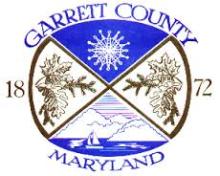
Garrett County is the westernmost county in Maryland. High in the Allegheny Mountains of the Appalachian Mountain Range; winters are harsh and forest covers 90 percent of the county. Before the county deployed a fiber-optic network, high-quality connectivity was hard to come by for schools, libraries, and other community anchor institutions. By making the most of every opportunity, Garrett County has improved efficiencies for the many small communities in the region and set the stage to improve connectivity for businesses and residents.
Rural, Remote, Ready For Better Connectivity
The county is more than 650 square miles but there are no large urban centers and over time a number of sparsely populated areas have developed as home to the county's 30,000 people; since 2000, population growth has stagnated. Many of the tiny communities where businesses and residents have clustered are remote and do not have public sewer or water. These places tend to have a high number of low-income people.
Unemployment rates are volatile in Garrett County, fluctuating with natural resources extraction industries. As the coal and lumber industries have waned, many jobs in Garrett County have disappeared. Garrett County Memorial Hospital and Beitzel industrial construction employ over 300 people and are the county’s largest employers.
All of these characteristics make Garrett County unattractive to the large Internet Service Providers (ISPs) that want to maximize investment and focus only on densely populated urban areas. Verizon offers DSL and Comcast offers cable in limited areas but many people rely on mobile Internet access and expensive satellite Internet access.
It Started With BTOP Fiber

In 2010, the State of Maryland received over $115 million in grant funding through the Broadband Technologies Opportunities Program (BTOP). With a matching $43 million from state and in-kind contributions, Maryland deployed the One Maryland Broadband Network (OMBN). In August 2013, the middle mile fiber-optic network was complete, stretching 1,324 miles across the state connecting 1,068 CAIs.
OMBN runs directly into Garrett County for approximately 50 miles. Since then, the county has added fiber when they have had the funds. They have not borrowed or bonded to fund deployment, but obtained a grant from the Appalachian Resource Council (ARC) to extend the fiber from OMBN and to purchase equipment to light the network. The largest expansion was funded with a $250,000 ARC grant. The County invested $250,000 of its own funds to total $500,000 for the initial investment into Garrett County’s fiber network. Since then, the county has collaborated with other entities to reduce costs and extend the network farther in a series of smaller expansions.
Getting Public Facilities Connected
BTOP funds were used to connect 32 CAIs, and the county’s efforts connected 18 more to Garrett County’s network. In addition to libraries, municipal administrative facilities, and the county hospital, all but two county schools are connected. The network also connects other public facilities, including a senior center, a local college, and a career center. Town halls across the county are also on the network and there is fiber connecting several industrial parks. In addition to connecting CAIs and public entities to the network, the county deploys wide area networks (WANs) between facilities so the larger institutions with the right personnel can manage their own internal networks.
Garrett County took an opportunistic approach to significantly reduce costs as they connected more facilities and entities. They were able to save approximately $17,000 when connecting the Airport and Emergency Operations Center (EOC). Nathaniel Watkins, Garrett County CIO of the Department of Technology and Communications (DoTCOM), told us the County Road Department dug the trenches, installed conduit, and handled all the physical plant. “I’m really cheap,” said Watkins. He’s developed a talent for collaborating with other state and county entities and staying on top of current and future projects so he can to work with other departments to cut costs.
DoTCOM funds and leads many of the projects. Two entities located in the Grantsville Outreach Center contributed 50 percent of the fiber so they could both obtain fiber connectivity. For connections to two other locations, Watkins discovered that conduit already existed to the buildings as part of the original design. DoTCOM purchased special terminated fiber and connected the facilities “for pennies on the dollar.” Another project included funds budgeted for security camera installation. By connecting that fiber project to the larger network, Watkins extended the reach of the county network at no extra cost.

Yet another project involved partnering with the state for an emergency services project that included a 700 Megahertz fiber/wireless project. Watkins’ department is “riding their coattails” and installing county fiber alongside state fiber in places where they consider it to be potentially advantageous for the future. This means no cost for trenching or burying fiber.
Ok for MOU
Garrett County has limited personnel needed to manage a fiber network. They choose to transfer ownership of public fiber to the state of Maryland and obtain a Memorandum of Understanding (MOU). The arrangement allows them access to the fiber without the financial burden of maintaining it; Garrett County only needs to employ one person to handle pole attachments, breaks, and other tasks. Because federal funds have paid for most of the asset and the county does not have the resources to dedicate to long-term maintenance, the system is right for them.
Better Services, Better Savings
In addition to providing connectivity by deploying the infrastructure to CAI’s, Watkins says that the county also operates as an Internet Service Provider (ISP). The benefit for customers, especially for county schools, has been two-fold: better connectivity and lower prices. When Garrett County Public Schools obtained service from large private providers, they paid a broad range of prices for many different speeds.
Before the fiber deployment, most schools needed to lease T1 lines at an average of $400 per month per facility just to get 1.5 Mbps, in addition to paying $50 - $150 per month for Internet access. Each facility ended up paying up to $550 per month for very slow access.
Now, there are ten schools that connect to the fiber and that share the cost of single Internet connection, which is a little more than $800 per month, or about $80 per facility. That connection feeds into a central data center and provides 300 Mbps symmetrical service to the school district as a whole. Each facility then decides what speed they want to connect back to the main data system. Some choose 500 Mbps Internet access from the county for $750 per month while others purchase 250 Mbps for $500. For a nominal increase, the schools capacity now is blasting away what they used to obtain from old, outdated T1 lines. The federal program that reimburses schools for telecommunications expenses, E-rate, covers approximately 70 percent of telecommunications expenses in Garrett County. The symmetrical speeds allow fast, reliable communication between facilities and to the main Internet connection at the data center.

Connected entities also saved significantly by switching from traditional telephone lines to VoIP. The Board of Education (BOE) in Garrett County has cut telephone expenses to $9 per month per phone for unlimited calling. The BOE’s facility alone is saving $10,000 per year. DoTCOM is slowly installing VoIP in other school facilities to expand on the savings. We’ve discovered similar savings in a number of places. In Austin, Texas, school officials estimate that they have saved millions by transitioning to the Greater Austin Area Telecommunications Network (GAATN) for Internet and telephone services.
Free Wi-Fi Is Expanding
The county is able to use the network to provide backhaul for free Wi-Fi to several public locations, including the County Courthouse and the Airport in Oakland, the Department of Utilities, and all of the County Roads' Garages. DoTCOM provides free Wi-Fi at the Adventure Sports Center International, a nonprofit recreation center in McHenry. There are two parks that are set to receive free Wi-Fi and security camera coverage, courtesy of the fiber network. Watkins wants to expand free Wi-Fi to as many locations in Garrett County as possible as a community service.
Better Business Connections In Garrett?
The county does not routinely offer connectivity to businesses but does provide services to one medical facility simply because it needs speeds that are not available from any private providers. Without high-quality Internet access from the county, the facility in Oakland would not be able to connect its facilities, which need to send data-intensive medical records to other healthcare offices and to each other. The county is “trying not to step on the toes” of the private providers while also bringing affordable, reliable connectivity to CAIs, says Watkins. Nevertheless, they are well positioned if the time comes when more businesses seek out fast, affordable, reliable connectivity from an entity they feel they can trust.

Next Project - Connecting Residents and Businesses
Garrett County has also started a new project to bring connectivity to some of the areas of the county where residents and businesses have the worst coverage or, in some cases, no Internet access at all. After years of study, they have determined that a fixed wireless solution will work best for them.
With their home-grown experience and proven strategy to cut costs through efficiency, Garrett County can certainly tackle their next challenge - ubiquitous Internet access in the far-west hills of Maryland.






